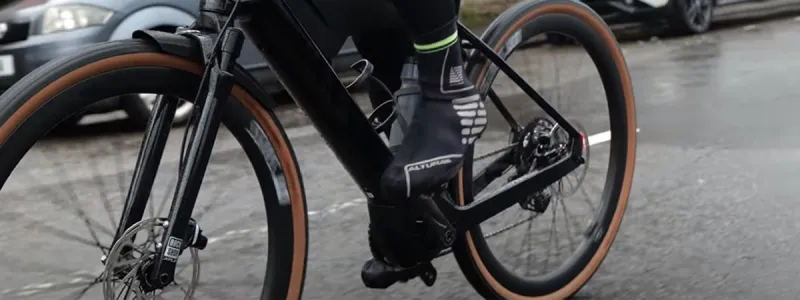It is estimated that up to 91% of cyclists experience nerve entrapment syndromes, which are accompanied by genital numbness.
Damage to this sensitive area can lead to bladder control problems, sexual problems, and erectile dysfunction. About 20% of these cyclists then developed erectile dysfunction.
Researchers seem to agree that two types significantly contribute to perineal numbness. A narrow seat that doesn’t support your pelvis’s sit bones and an elevated seat nose.
The mainstay of perineal numbness treatment is adjusting bike seats and bike positions to relieve pressure on the perineum, such as lowering the seat height or tilting the nose of the seat down.
This blog post explores various treatment options to help you get back on your bike comfortably and confidently. As well as causes of perineal numbness and its potential long-term effects.
Perineal Numbness From Cycling Treatment: 9 Methods

It is essential to address it as it can lead to more severe health problems like erectile dysfunction or even impotence. There are effective treatment options to tackle perineal numbness and ease its symptoms. Here are some solutions.
Changing Saddle Design and Material
One of the most common reasons for perineal numbness is an inappropriate saddle design or material. If your saddle is too narrow, too firm, or doesn’t match your anatomy, it can cause undue pressure and pain on your perineum.
The solution is to find a saddle designed for your gender, anatomy, and riding style. Look for saddles with cutouts or grooves that relieve pressure on the perineum and padding that distributes weight evenly across your sit bones. Consider getting a professional bike fitting service to ensure your saddle and bike setup are correctly adjusted to your body.
Using Bike Shorts with Perineum Padding
Another effective way to prevent perineal numbness is to wear bike shorts with built-in padding. These shorts have a chamois that cushions between your perineum and the saddle. With the added padding, pressure is distributed more comfortably across your sit bones, reducing the risk of numbness.
When shopping for bike shorts, choose models with thicker and wider padding to ensure maximum comfort. Avoid shorts that have seams or edges that can irritate your skin.
Adjusting Cycling Posture
Cycling posture significantly affects the distribution of pressure on the perineum area. Thus, perineal numbness can be minimized by tilting the head down. Consider the following tips:
- Shift your weight towards your sit bones or change hand positions frequently.
- Lower your handlebars to reduce pressure on the perineum.
- Keep your hips stable and level while riding.
Reducing Cycling Duration
Reducing your cycling duration can be an effective way of preventing perineal numbness. If you’re new to cycling, avoid long rides until your body has developed the necessary muscles and stamina. If you’re an experienced cyclist, take frequent breaks and incorporate rest days into your routine.
Giving your body time to recover and prevent tissue damage is essential. Regular stretching and massage can also help reduce post-ride soreness and stiffness.
Medical Interventions
If you are experiencing perineal numbness from cycling, there are treatment options available to relieve your symptoms.
Physical Therapy
For perineal numbness caused by cycling, physical therapy is often recommended as the first line of treatment. You can strengthen pelvic floor muscles and improve blood flow in your perineum with pelvic floor exercises from a physical therapist. Besides relieving symptoms, these exercises can help reduce pressure on the area.
Surgery
In some cases, surgery may be necessary to relieve perineal pain or numbness. This is usually only recommended when other treatments have not been effective. Several surgical procedures can be performed on the perineum to ease pressure, including pudendal nerve decompression surgery and perineal reconstruction.
Medication
The discomfort and pain associated with perineal numbness can also be managed with medication. Inflammation and discomfort can be reduced in the affected area by using pain relievers like ibuprofen or acetaminophen, and medicines like gabapentin or pregabalin may also be prescribed by your doctor.
Alternative Therapies
There are traditional medical treatments available for perineal numbness, but alternative therapies such as acupuncture and chiropractic care have also become popular among those seeking relief from this condition.
Acupuncture

Various points on the body are injected with thin needles during acupuncture, a traditional Chinese medicine practice. The aim is to balance the energy flow through the body and promote healing. For perineal numbness, acupuncture is an effective therapy. The needles are placed on the perineal area and the lower back to stimulate circulation and promote healing. Here are a few benefits of acupuncture for perineal numbness:
- It stimulates the body’s blood flow and energy flow.
- Reduces inflammation and swelling.
- Relaxes muscles and decreases tension in the pelvic region.
- Promotes healing of damaged nerve tissue.
- Reduces pain and discomfort.
Chiropractic
Chiropractic care is a natural therapy that focuses on the alignment of the musculoskeletal system. The goal is to restore joint mobility and ease pain. For perineal numbness, chiropractic care is a popular alternative therapy.
The chiropractor will use gentle adjustments to realign the spine and pelvis to reduce pressure on the perineal nerve. Here are some benefits of using chiropractic care for perineal numbness:
- It helps to correct spinal and pelvic misalignment.
- Reduces pressure on the perineal nerve.
- Stimulates blood flow and promotes healing.
- Relieves muscle tension and soreness.
- Improves overall nerve function.
Perineal Numbness From Cycling Treatment: 3 Causes
For the treatment or application of any medication, it’s also necessary to know its causes. This condition has several reasons, including anatomical differences, improper seat position, and poorly designed saddles.
The Impact of Saddle Pressure
One of the primary causes of perineum numbness in cycling is the pressure exerted on the perineal area by the bike saddle. Numbness in the perineum can be caused by this pressure obstructing blood flow and damaging the nerves around the perineum.
The Effect of Cycling Posture
The way you sit on your bike can also contribute to perineal numbness. Poor posture or incorrect bike fitting can exert excessive pressure on the perineal area, resulting in discomfort and numbness.
The Role of Cycling Duration
The longer you ride your bike, the higher the chances of developing perineal numbness. Spending extended periods on the bike saddle can cause nerve damage and restrict blood flow around the perineum.
Perineal Numbness From Cycling: 3 Long-Term Effects
It’s essential to be aware of perineal numbness’s long-term effects on our bodies. Long-term effects could be a link between perineal numbness and erectile dysfunction, the impact it can have on urinary and bowel functions, and the importance of seeking medical help for persistent perineal numbness.
Erectile Dysfunction and Perineal Numbness
Perineal numbness can cause nerve and blood vessel damage that handles sexual function. This can lead to erectile dysfunction and difficulty in achieving and maintaining an erection. The longer the numbness persists, the greater the potential risk for long-term sexual dysfunction.
Bowel and Urinary Functions

Perineal numbness can affect the ability to control bladder and bowel functions. The numbness can weaken muscles responsible for these functions, leading to incontinence and difficulty with bowel movements. Quality of life and overall well-being can be affected significantly.
Importance Of Seeking Medical Help
If you experience persistent perineal numbness, it’s essential to seek medical attention. Long-term neglect can cause irreversible damage to nerves and blood vessels, potentially causing irreversible harm. Your doctor may recommend changes to your cycling routine, physical therapy, or surgery to address the issue.
Conclusion
Perineal numbness from cycling is not something to be taken lightly. Pain in the perineum after cycling is a common issue for many cyclists. There can be long-term effects, including erectile dysfunction and impact on urinary and bowel functions. There are various treatment options available to alleviate or prevent perineal numbness.
Changing saddle design and material, using bike shorts with padding, and adjusting cycling posture and duration are all effective options. Various medical interventions, including physiotherapy, surgery, and medication, can be explored for more persistent cases.
Chiropractic and acupuncture are alternative therapies that may also be worth considering. Remember, seeking medical help and addressing the issue early can prevent further complications. Don’t let perineal numbness hinder your cycling experience. Take action and prioritize your health.
FAQs
Is Your Crotch Numb After Cycling?
Crotch numbness after cycling is likely due to prolonged pressure on the perineum, the area between the anus and genitals. This pressure can compress nerves, leading to numbness and potential sexual dysfunction. To address this, consider adjusting your bike seat, taking breaks, and wearing padded shorts for better comfort.
How Does Cycling Affect Penile Numbness?
Cycling can cause penile numbness by putting pressure on the perineum compressing nerves and arteries. This pressure can lead to nerve damage, resulting in loss of sensation for some male bikers. The compression from the bicycle seat can contribute to penile numbness during cycling.
Does Riding A Bike Leave Your Penis Numb?
Yes, feeling numb after biking is a common issue known as paresthesia. Cyclists often experience numbness and tingling in areas like the hands, fingers, perineum, spine, and feet. Incorporating proper bike fitting breaks and adjusting riding positions can help alleviate this discomfort.
Can Cycling Cause Bladder Problems?
Cycling can lead to urethral stricture, causing narrowing of the urinary tube. Compared to swimmers or runners, cyclists are more prone to this issue. Overall, cycling does pose a risk for specific bladder-related problems like urethral stricture.
Do Cycling Treatments Help With Pudendal Nerve Damage?
Yes, cycling treatments can help with pudendal nerve damage by focusing on reducing pressure on the nerve. Consulting a healthcare professional for a personalized treatment plan tailored to your symptoms and severity is crucial. Additionally, rest and avoiding exacerbating activities play key roles in the recovery process.


